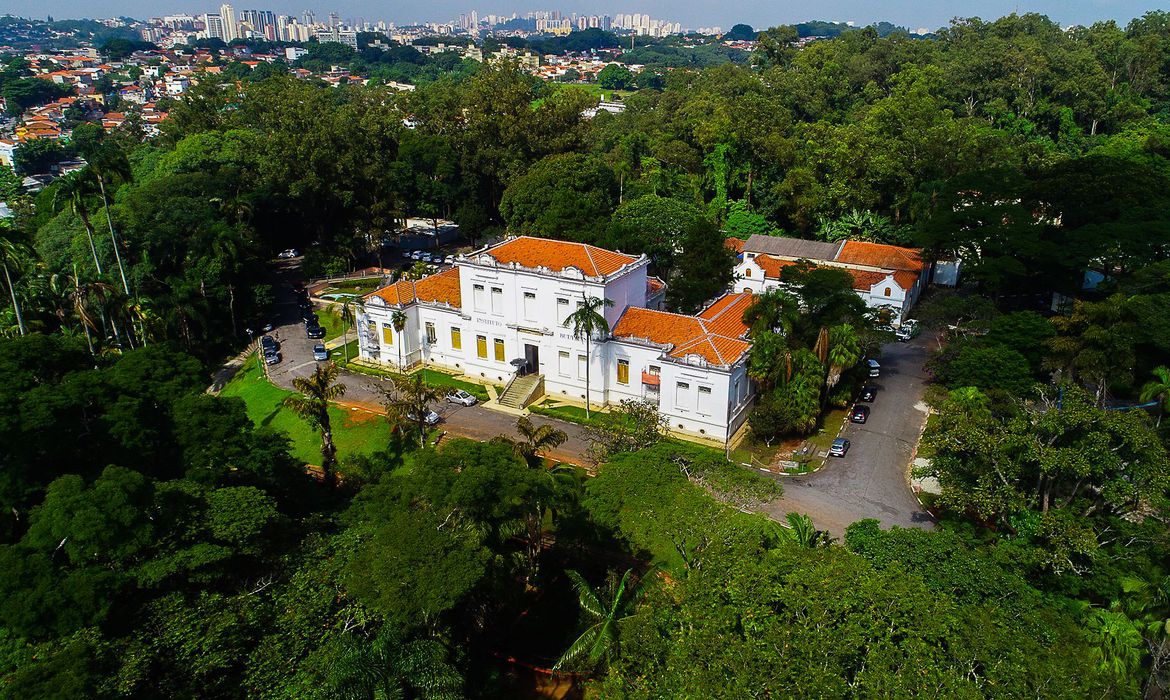RIO DE JANEIRO, BRAZIL – Butanvac, which is being developed at the Butantan Institute and is already being tested in humans, is ahead in the race among some of Brazil’s largest research institutions to find a national immunizing agent against Covid-19.
More than ten projects are underway across the country, five of which are more advanced. In addition to Butanvac, products from three federal research universities – UFRJ in Rio de Janeiro; UFMG in Belo Horizonte, Minas Gerais; and USP of Ribeirão Preto, São Paulo – are awaiting ANVISA (national health regulator) approval to begin clinical trials; UFPR in Curitiba, Paraná is expected to follow suit soon.

It is expected that Brazil will have at least one vaccine developed and produced domestically next year. In-country production is important because it lowers costs, provides autonomy, and promotes the development of Brazilian technology.
Butanvac is the only domestic candidate already in the clinical trials phase in humans. If all goes well, the developers believe, approval for emergency use will be sought in November.
Using technology originally developed in the United States, the immunizer uses inactivated Newcastle disease virus (which affects birds) to deliver the spike protein of the new coronavirus into the body.
“In this Phase A clinical trial, we are testing the safety and defining the doses,” said Butantan Institute Director Dimas Covas. “It should be completed by the end of the month. In the second phase, we will compare immunological performance against other vaccines and Coronavac. This should be done by October. After that, we will start submitting the dossier to Anvisa to get approval for use.”
The virus is developed in embryonated eggs. It is the same technique used to produce flu vaccines, for which Butantan already has an industrial production structure. The product has not yet been approved, but the institute has already produced 10 million doses.
They will be used as soon as final approval is granted. It is expected that the vaccine will be available early next year. “Because this vaccine is produced on the same platform as the flu vaccine, it can be manufactured in many factories around the world,” Covas says.
Coppe/UFRJ is also developing an immunizing agent against Covid-19, called UFRJvac. The vaccine is based on recombinant protein technology used in vaccines against hepatitis B and HPV.
For Covid-19, the scientists made a copy of the spike protein of Sars-CoV2 in the laboratory, which is present in the spicules that envelop the virus. After ingesting the immunizing agent, the organism “learns” to recognize the protein, preparing itself to fight off any infection. As a result, it is unlikely to cause unexpected side effects, the spokesperson said.
The technology used in the UFRJ vaccine also allows the copy of the spike protein used in the vaccine formulation to be adapted (relatively easily) to the mutations of the Sars-CoV2 variants. “We started working on the variants in March,” says Leda Castilho of Coppe/UFRJ, the study coordinator. “We already have for Delta, Gama, Beta, and three or four others.”
The product developed by UFMG and Fiocruz-MG, SpiN-TEC, is also based on recombinant protein technology. The researchers used a genetically modified common bacterium. It received parts of the Sars-CoV2 genome so that it could produce proteins of the new coronavirus.
When the chimera is injected into the human organism, it triggers an immune response. By using two proteins of the virus, the vaccine should be able to bypass more variants. “Since several parts of the molecule are recognized, a mutation here or there does not affect the vaccine’s response,” explained the study’s coordinator, Ricardo Gazinelli, adding that the vaccine’s active ingredient is in production.
The vaccine that USP Ribeirão Preto is developing together with Farmacore, called Versamune, also uses a recombinant SarS-CoV2 protein. In this case, however, it is packaged in a nanoparticle that stimulates immune system T cells.
According to Farmacore, vaccines using the same technology produce immunity for up to 12 years. It is not yet known whether the same effect can be achieved with coronavirus.
The Federal University of Paraná vaccine, which does not yet have a definitive name, also uses recombinant viral proteins. They are carried by biodegradable biopolymers. It is a new technology developed at UFPR.
The biopolymers absorb the proteins of Sars-CoV2. They mimic the virus and carry it into the body. “Vaccines essentially consist of two components: the antigen and the carrier or adjuvant,” explains UFPR study coordinator Emanuel Maltempi de Souza.
“The part of the vaccine that comes from the pathogenic organism recognized by our cells forms the defense. But the carrier is also important because it stimulates the T cells to respond. The antigen is relatively easy to make, but the adjuvant is another story. Only a few companies make them. The development of adjuvants is important not only for production but also for us to have their intellectual property. To be fully independent, we need to be part of the producer scene.”
“This pandemic has highlighted our technological dependence, both in diagnostics and medical equipment, as well as in the issue of vaccines,” said the coordinator of the Science Ministry’s National Institute of Vaccine Science and Technology, Ricardo Gazinelli.
“All the BRICS countries (Brazil, Russia, India, China, and South Africa) are already developing their vaccines, and Cuba already has two. Although Brazil is a major producer of vaccines, it has never developed a vaccine device. We need to learn this way.”
Emanuel Maltempi de Souza agrees with his colleague. “A country with more than 200 million inhabitants that does not have its own vaccine technology is at the mercy of the goodwill of others and has no way to respond.”

